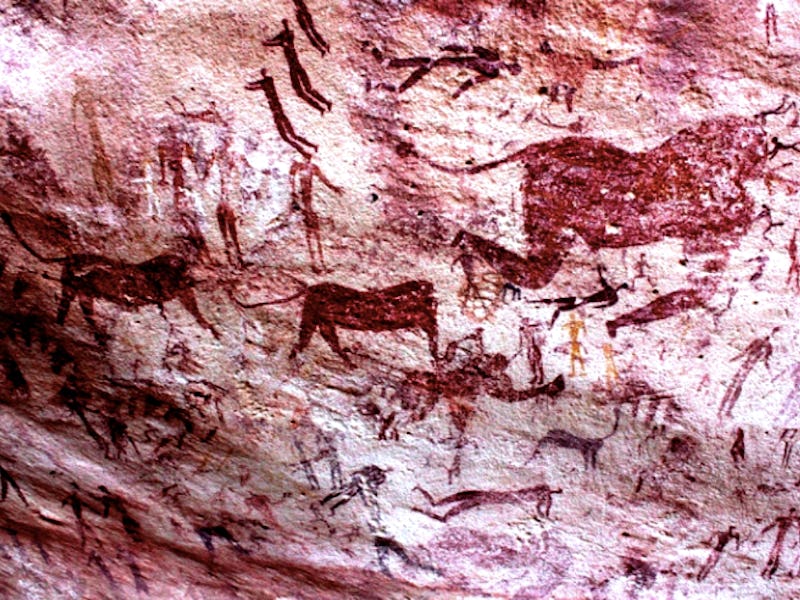Whispers of the First Human Language Heard in the "Sound" of Ancient Cave Art
For early humans, these old paintings bridged symbol and sound.

Our ancestors emerged as a species 200,000 years ago and figured out how to use language about 100,000 years later. Scientists haven’t figured out how human language developed in the first place, though. Multiple theories abound, but in a paper released Tuesday, linguists presented a new origin story: that the emergence of cave art kicked off a new way of thinking among Homo sapiens, which, in turn, set the stage for human language to develop.
Evidence of cave and rock art can be found on every major continent save Antartica, with over a million cave art images found in southern Africa alone. For thousands of years, early humans expended a huge amount of effort to make these paintings — an effort, researchers from MIT and the Universities of Tokyo and São Paulo explain in Frontiers in Psychology, that augmented their capacity to represent thoughts, beings, and events that aren’t actually present, which the researchers call “symbolic thinking.”
You might also like: “Neanderthal Cave Art Proves Humans Aren’t the Only Artistic Species”
Famous examples of cave art showing symbolic thinking include the hands shown in the Cueva de las Manos in Argentina or the bison painted within the Lascaux caves in France. The paper’s authors argue that the symbolic thinking demonstrated by cave art connects to the emergence of language because the location of those artworks show a connection between subject matter and sound. Previous research, they note, has demonstrated that early humans purposefully chose where they would place their images on the basis of the cave’s acoustic properties.
Portrait of a Lascaux animal painting.
For example, in Lascaux, pictures of hoofed animals like bulls and bison are located in chambers where echoes and reverberation create sounds similar to hoof beats. In contrast, images of felines, dots, and handprints are often in chambers that are acoustically quiet. Stalagmites and stalactites, which sound like musical instruments when they’re hit, are highlighted with paint in some ancient caves.
This connection between visual art and auditory sounds, which the researchers call “cross-modality information transfer,” is thought to have enhanced early man’s ability to convey symbolic thinking while foreshadowing elements of human language. Just as cave art shows action, objects, and modifications, human language features verbs, nouns, and adjectives. In turn, art and language both become proxies for expressing an internal mental state.
Cave painting at the Tassili n'Ajjer in southeast Algeria.
By creating cave art, the researchers write, modern humans were inventing “fossilized proxies for the expression of full-fledged human linguistic behavior.” And this ability to use language, the researchers note, very likely emerged before the small band of Homo sapiens migrated from Africa into Europe and Asia. Archeologists have dated rock art created by the San people in Africa to 70,000 years ago — evidence that symbolic thinking took root before the migration — and believe that cognitive ability spread quickly because of early human’s small populations.
“Cave art was part of the package deal in terms of how Homo sapiens came to have this very high-level cognitive processing,” co-author Shigeru Miyagawa, Ph.D., explained in a statement to MIT News. “You have this very concrete cognitive process that converts an acoustic signal into mental representation and externalizes it as a visual.”